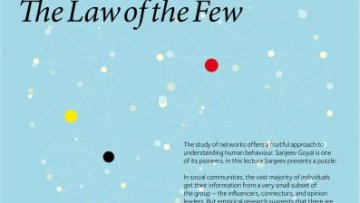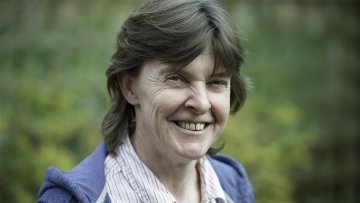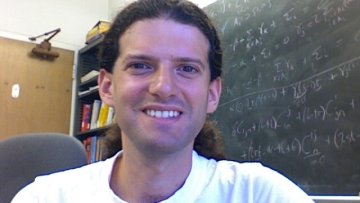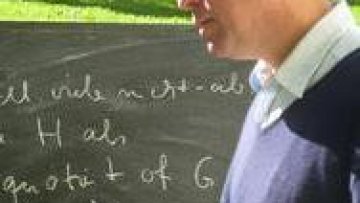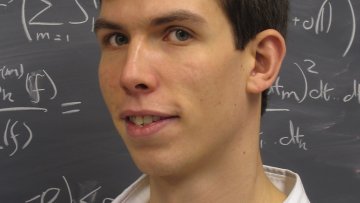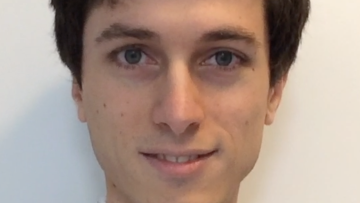14:00
Catch me if you can: locating (and fixing) side channel leaks
Abstract
Side channel leakage is no longer just a concern for industries that
traditionally have a high degree of awareness and expertise in
(implementing) cryptography. With the rapid growth of security
sensitive applications in other areas, e.g. smartphones, homes, etc.
there is a clear need for developers with little to no crypto
expertise to implement and instantiate cryptography securely on
embedded devices. In this talk, I explain what makes finding side
channel leaks challenging (in theory and in practice) and give an
update on our latest work to develop methods and tools to enable
non-domain experts to ‘get a grip’ on leakage in their
implementations.
Analysis of a rotating two-component Bose-Einstein condensate
Abstract
In this joint work with Amandine Aftalion we study the minimisers of an energy functional in two-dimensions describing a rotating two-component condensate. This involves in particular separating a line-energy term and a vortex term which have different orders of magnitude, and requires new estimates for functionals of the Cahn-Hilliard (or Modica-Mortola) type.
Thin liquid films influenced by thermal fluctuations: modeling, analysis, and simulation
Abstract
For liquid films with a thickness in the order of 10¹−10³ molecule layers, classical models of continuum mechanics do not always give a precise description of thin-film evolution: While morphologies of film dewetting are captured by thin-film models, discrepancies arise with respect to time-scales of dewetting.
In this talk, we study stochastic thin-film equations. By multiplicative noise inside an additional convective term, these stochastic partial differential equations differ from their deterministic counterparts, which are fourth-order degenerate parabolic. First, we present some numerical simulations which indicate that the aforementioned discrepancies may be overcome under the influence of noise.
In the main part of the talk, we prove existence of almost surely nonnegative martingale solutions. Combining spatial semi-discretization with appropriate stopping time arguments, arbitrary moments of coupled energy/entropy functionals can be controlled.
Having established Hölder regularity of approximate solutions, the convergence proof is then based on compactness arguments - in particular on Jakubowski’s generalization of Skorokhod’s theorem - weak convergence methods, and recent tools for martingale convergence.
The results have been obtained in collaboration with K. Mecke and M. Rauscher and with J. Fischer, respectively
Effects of small boundary perturbation on the porous medium flow
Abstract
It is well-known that only a limited number of the fluid flow problems can be solved (or approximated) by the solutions in the explicit form. To derive such solutions, we usually need to start with (over)simplified mathematical models and consider ideal geometries on the flow domains with no distortions introduced. However, in practice, the boundary of the fluid domain can contain various small irregularities (rugosities, dents, etc.) being far from the ideal one. Such problems are challenging from the mathematical point of view and, in most cases, can be treated only numerically. The analytical treatments are rare because introducing the small parameter as the perturbation quantity in the domain boundary forces us to perform tedious change of variables. Having this in mind, our goal is to present recent analytical results on the effects of a slightly perturbed boundary on the fluid flow through a channel filled with a porous medium. We start from a rectangular domain and then perturb the upper part of its boundary by the product of the small parameter $\varepsilon$ and arbitrary smooth function. The porous medium flow is described by the Darcy-Brinkman model which can handle the presence of a boundary on which the no-slip condition for the velocity is imposed. Using asymptotic analysis with respect to $\varepsilon$, we formally derive the effective model in the form of the explicit formulae for the velocity and pressure. The obtained asymptotic approximation clearly shows the nonlocal effects of the small boundary perturbation. The error analysis is also conducted providing the order of accuracy of the asymptotic solution. We will also address the problem of the solute transport through a semi-infinite channel filled with a fluid saturated sparsely packed porous medium. A small perturbation of magnitude $\varepsilon$ is applied on the channel's walls on which the solute particles undergo a first-order chemical reaction. The effective model for solute concentration in the small-Péclet-number-regime is derived using asymptotic analysis with respect to $\varepsilon$. The obtained mathematical model clearly indicates the influence of the porous medium, chemical reaction and boundary distortion on the effective flow.
This is a joint work with Eduard Marušić-Paloka (University of Zagreb).
Oxford Mathematician Alison Etheridge FRS has been awarded an OBE in the Queen's Birthday Honours List for Services to Science. Alison is Professor of Probability in Oxford and will take up the Presidency of the Institute of Mathematical Statistics in August 2017.
The International Congress of Mathematicians (ICM) is the largest conference in mathematics. It meets once every four years, hosted by the International Mathematical Union (IMU) and hands out the most important prizes in the subject, notably the Fields Medals and the Nevanlinna and Gauss Prizes.


